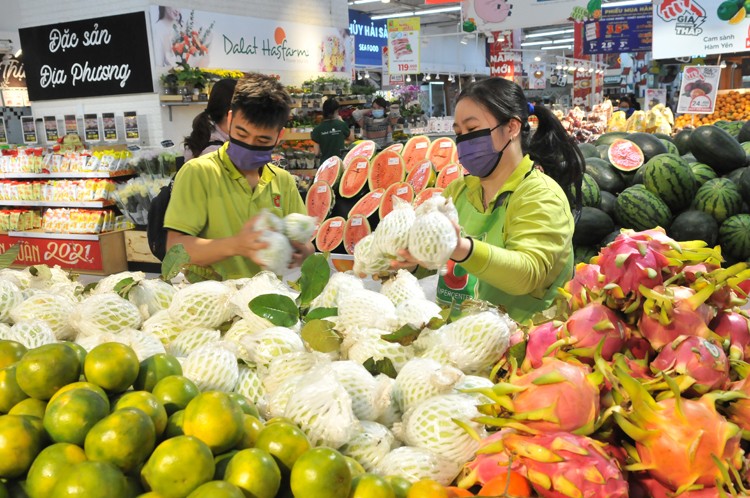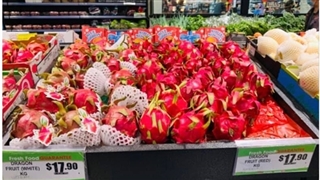Vietnam’s fruit and vegetables have great opportunity to enter EU market
PSNews – The European Union (EU) with a population of more than 500 million people is a large vegetables and fruit import market. However, the volume of fruit and vegetables imported from Vietnam only account for 1% of this market’s total imports. In other words, Vietnam enterprises still have much opportunity to export more fruit and vegetables to this potential market in the coming time.
According to the European Statistics Agency (Eurostat), the EU's imports of fruit and vegetables in the first four months of 2022 increased sharply compared to the same period last year. The average price of imported vegetables and fruits in the EU also increased.
Meanwhile, Vietnam is currently the 43rd largest fruit and vegetable supplier to the EU, with 24 thousand tons imported to the market in the first four months of 2022, worth 62.5 million Euro, an increase of 29.4% in value over the same period in 2021. The average price of fruit and vegetables imported from Vietnam reaches 2,625.5 Euro per ton, up 20.2% over the same period in 2021.

The categories most imported by the EU in the first 4 months of 2022 are edible vegetables and certain roots and tubers (HS 07) and edible fruit and nuts, peel of citrus fruits or melons (HS 08).
Still, the import proportion of these 2 categories from Vietnam into EU market remains very small, despite the fact that Vietnam has many famous fruits such as lychee, longan, rambutan, dragon fruit, pineapple, melon...
Besides, the important EU-Vietnam Free Trade Agreement (EVFTA) has opened the door for many Vietnamese fruit and vegetables products to enter the EU market, so Vietnam can gain advantage over strong competitors, such as Thailand, China, Malaysia, Indonesia, that have not signed an FTA with the EU.
According to Mr. Tran Van Cong, Vietnam's Agricultural Counselor in the EU, Vietnam can import frozen and canned vegetables, tubers and fruit to the EU market. Meanwhile, vegetables, tubers and fruits have a largest potential to increase the export turnover of Vietnamese agricultural products to this market.
The Center for Industry and Trade Information under the Ministry of Industry and Trade also said that the Vietnam’s processed fruit and vegetable could be potential export products that not only helps to control the cost but also increases their values compared to fresh products.
The processed agricultural products can also have a long shelf life and relieve the situation of local oversupply.
However, the processing of fruit and vegetables requires large investment, while most fruit and vegetable processing enterprises in Vietnam have very small capital. Further, the post-harvest preservation technology is poor, leading to post-harvest losses of over 20%.
In order to promote fruit and vegetable exports to the EU market, General Director of Vinamit Joint Stock Company Nguyen Lam Vien said that localities need to build a transparent information system and a focal point to control product quality, and to form large-scale raw fruit and vegetables areas.
Meanwhile, Mr. Hoang Xuan Khang, representative of International Fresh Group said that state management agencies should support small and medium enterprises w to obtain necessary certifications to export fruit and vegetables to the EU.
The Ministry of Industry and Trade affirmed that, since the EVFTA agreement came into effect, the Vietnam's fruit and vegetable exports to the EU market have achieved positive results.
In the coming time, Vietnamese enterprises can increase the export of vegetables and fruits to the EU, but they should strictly comply with the regulations on the UE standards for traceability, quality, food safety and hygiene.

 Fruit, vegetable exports sustain growth for second month in a row
Fruit, vegetable exports sustain growth for second month in a row  Vietnam dragon fruits continuously arrive in Australia
Vietnam dragon fruits continuously arrive in Australia 